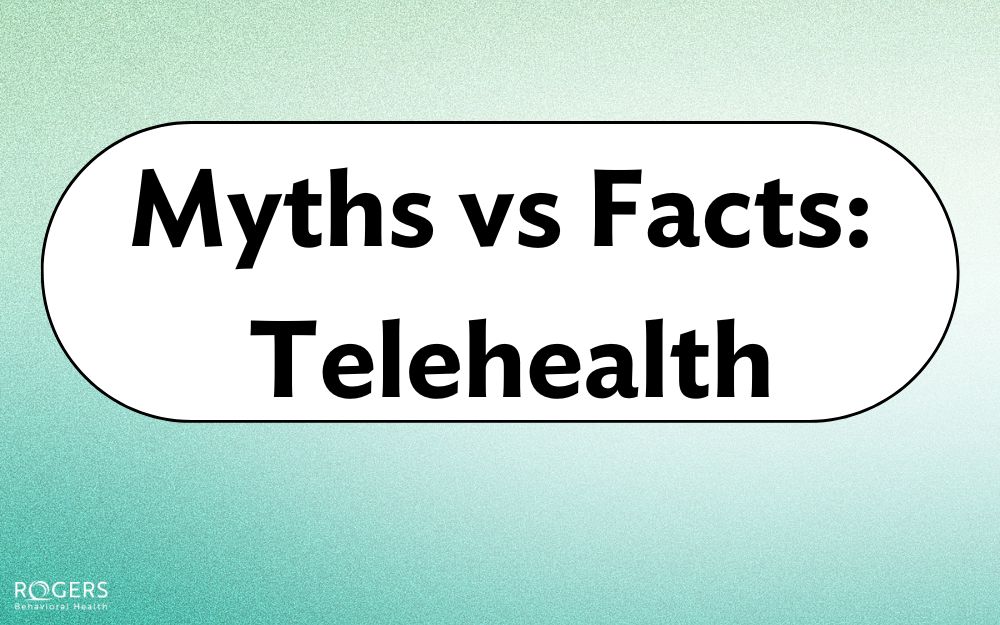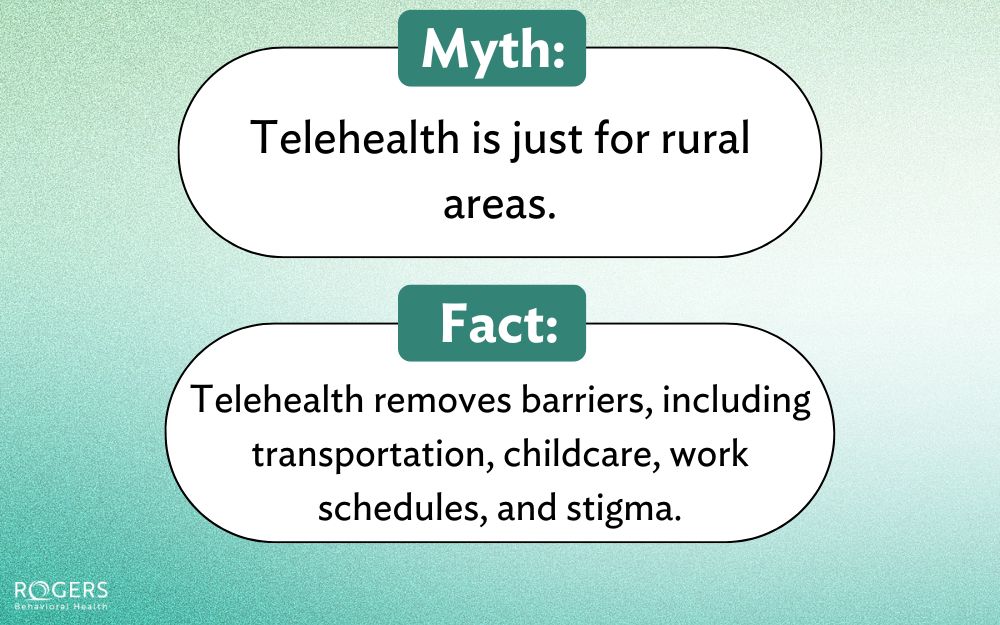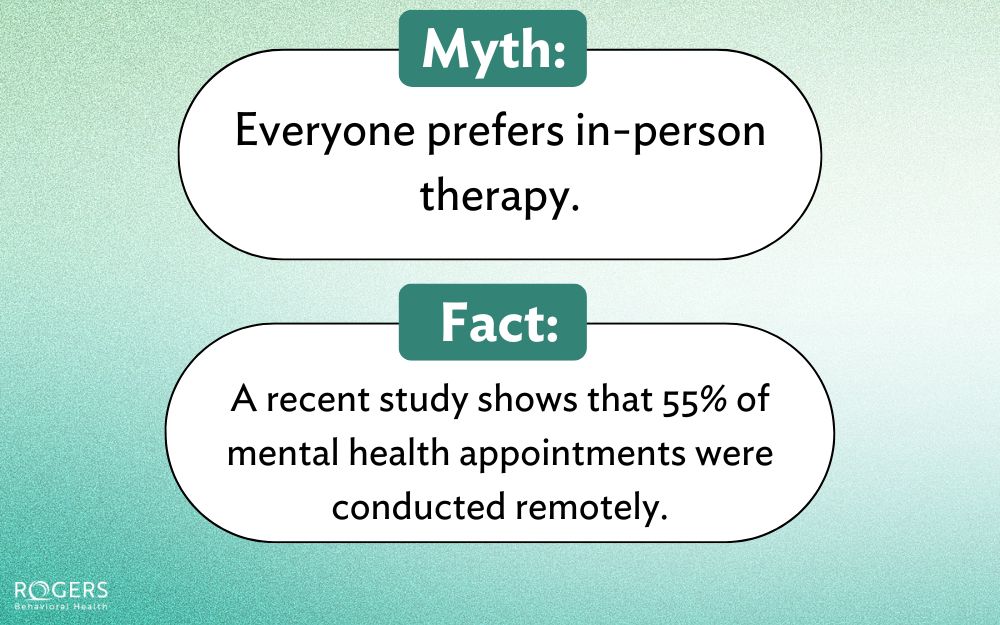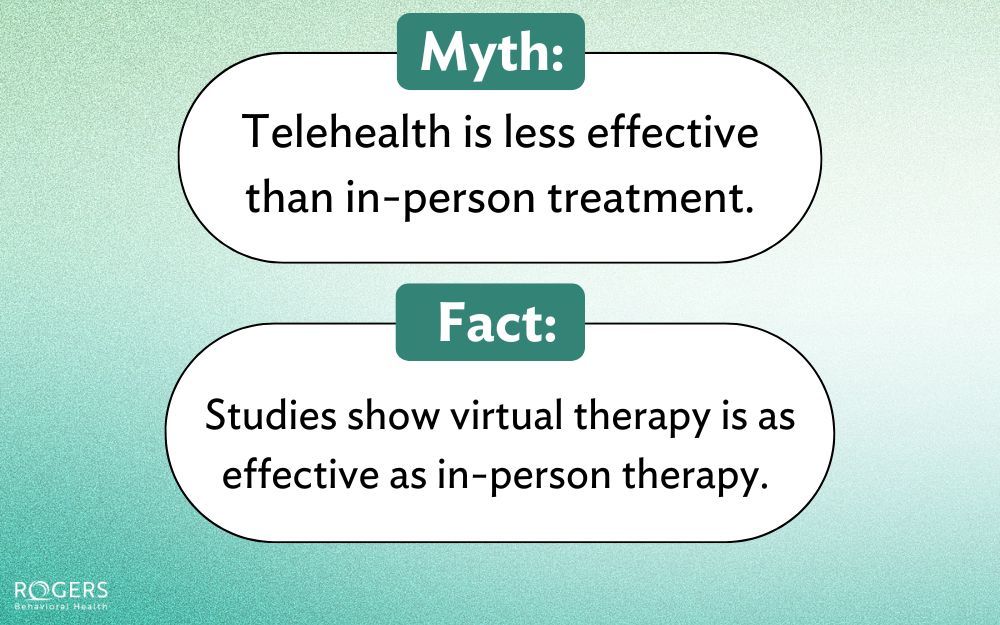



Telehealth may have first seen its rise during the pandemic, but it’s here to stay – and expanding at Rogers Behavioral Health.
“During COVID, we tried to pivot to virtual care as quickly as we could to maintain treatment for our patients,” says Greg Wisniewski, associate director for Rogers’ Telehealth Operations. “We saw great innovation and increased accessibility. Now, we have the opportunity to implement a more deliberate growth plan and continue expanding access to our care.”
Rogers’ telehealth therapy
Currently, Rogers offers telehealth services in Wisconsin, Illinois, Minnesota, Tennessee, Florida, and Colorado. Efforts are focused on expanding into Pennsylvania, Georgia, Washington, and California, with the goal of providing care across all ten states where Rogers operates. This expansion will help serve a geographically diverse patient population with a wide range of symptoms, ensuring comprehensive and accessible care. As part of ongoing growth initiatives, Rogers has joined the American Telemedicine Association (ATA), marking a significant step forward in connecting with industry leaders and adopting innovative practices to enhance patient care and broaden reach. Additionally, in early September, the fully virtual Fire Watch intensive outpatient program was launched, providing critical support to Veterans and military service members in need. Plans are also underway to explore extending telehealth services to adolescents and children.Patient-centered approach
Rogers is taking a more individualized approach to virtual care that follows a college model. “People in our telehealth care are given core groups, and everyone participates in something like college general education classes. Based on their individual needs, they have symptom-specific groups. For example, they could be attending depression-specific groups, Primary Behavioral Health-specific groups, or OCD-specific groups. We’re able to support a range of people and really treat for individual symptoms.” Rogers is also collaborating with Class to offer our treatment on a new virtual platform, which is interactive and tailored to patients’ specific needs. It’s used for all our 100% virtual programs. “Class is accessed with just one link and is designed for learning,” Greg says. “It is still the same Rogers care – evidence-informed and based in our protocols.”Dispelling 3 myths
Signa Meyers, vice president of strategic initiatives, addresses three common myths about virtual mental health care.Myth #1: Telehealth is just for rural areas.
Telehealth removes barriers that can include:- Transportation: Limited public transport, car troubles, or physical limitations can make getting to appointments difficult.
- Childcare: Finding childcare for appointments can be a major hurdle, especially for parents with multiple children.
- Work schedules: Taking time off for appointments can be disruptive to work.
- Payer source: Not all insurance plans offer in-network providers in convenient locations.
- Stigma: Some people feel more comfortable seeking help anonymously or from the privacy of their own home.

